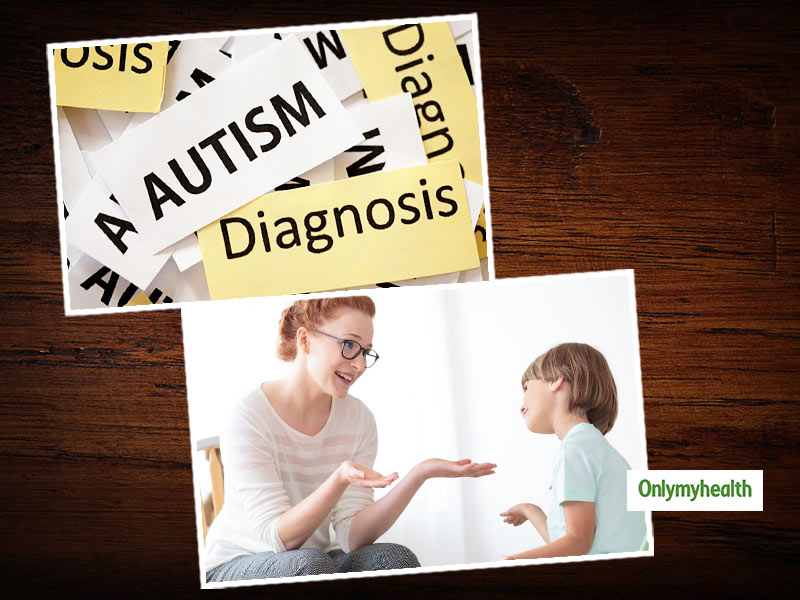
"Acting early and giving your child a chance to receive the appropriate therapy, can change a child’s developmental path. Our experience with early intervention shows that high functioning children can blend easily with peers and in the regular classroom set up, requiring minimal support" says Dr Anil Sharma, Clinical Director of Mom's Belief. Overview: The case study here will help you look into the case of Mrs Kumar, and her two and half-year-old child, who was considered at risk for autism but early intervention by Dr Anil Sharma helped in improved skill development, and he will now be able to go to a regular school.
Table of Content:-
What problems was Mrs Kumar facing with her son?
- Mrs Kumar, the mother of a two and half-year-old boy, was concerned about her son’s development. Even at age 2, Aditya could speak only a couple of words, and the pronunciation was unclear. He wouldn’t make eye contact and would also not respond to his name. He also showed signs of hyperactivity.
- Aditya had trouble going to the toilet on his own. He was also visibly uncomfortable with performing daily activities like brushing, bathing his head, etc. because of his sensory or tactile issues. Mrs Kumar was worried her child would not be able to attend regular school if these developmental issues were not improved or resolved. The child was considered at risk for autism by the child psychologist assigned to him.
- Fortunately, Aditya’s mother had noticed these signs in her child at an early stage and contacted Dr Anil Sharma, about which she had learned through a Facebook Ad, to inquire about what could be done to address her child’s developmental delays.
Also Read: Do You Have A Hyperactive Infant and A Kid? Here's What You Need To Do

What were the tools and strategies provided by Dr Anil Sharma?
- Aditya needed improvement in his verbal and non-verbal communication skills. The tools used to develop this skillset included oral-motor imitation cards (for activities like blowing, sucking, moving the tongue) and “I want” cards to help the child express his needs using non-verbal communication. “Fun with sand “ was an activity introduced to improve his tactile issues by gradually orienting the child to textures that made him previously uncomfortable by including them in play. This activity also helped in strengthening the muscles of fingers and thus improving his fine motor skills.
Also Read: Electronic Screen Syndrome: Leading To Secondary Autism In India
- Mrs Kumar was taught steps for toilet training based on task-breakdown for skill development as they are easier to follow and imitate by Aditya, and tracking activities like “follow the dot” was introduced to improve eye contact, which simultaneously helped improve concentration. All tools needed for performing these activities were included in the toolkit available at home.

- Aditya’s fine motor skills like the tripod grip (pencil grip) and pincer grip were addressed with activities like “speed with beads”, sponge painting and “pick me” cards with velcro. Aditya also needed to be taught colour identification, and so he was introduced to the tool “Dangling shapes” that not only aimed at learning shapes and colours but would also help address hyperactivity concerns raised by his mother. This tool was quite useful, and progress in this skill area was made in the first month itself.
Also Read: UNICEF Expert Tips: Simple Parenting Tips To Help Children Deal With Anxiety

What were the changes observed after the intervention?
- Most changes or progress were observed after the completion of the second month. He started tasting different food items, and eye contact improved considerably. He started using mouth muscles for actions like blowing as taught. Aditya also started using more new words and now uses words like “yummy”, “wow”, “ice cream” etc. with increased frequency. He is now able to go to the toilet and use the toilet on his own, and communicates bathroom needs by saying “chi-chi”.
- After the successful completion of the home program for two months, the parents have transitioned to only using the parental guidance service, through which additional concerns are addressed, and strategies to improve skill development for Aditya are taught, while the parents arrange the materials and tools themselves.
- Aditya’s parents are quite satisfied with the improvements seen after the completion of the home program, and they continue to work on skill development for Aditya with our parental guidance program. If they continue to function as co-therapists for Aditya, he will be able to attend regular school in a few months and be integrated into mainstream school education.
Read more articles on Children's Health
Also watch this video
How we keep this article up to date:
We work with experts and keep a close eye on the latest in health and wellness. Whenever there is a new research or helpful information, we update our articles with accurate and useful advice.
Current Version